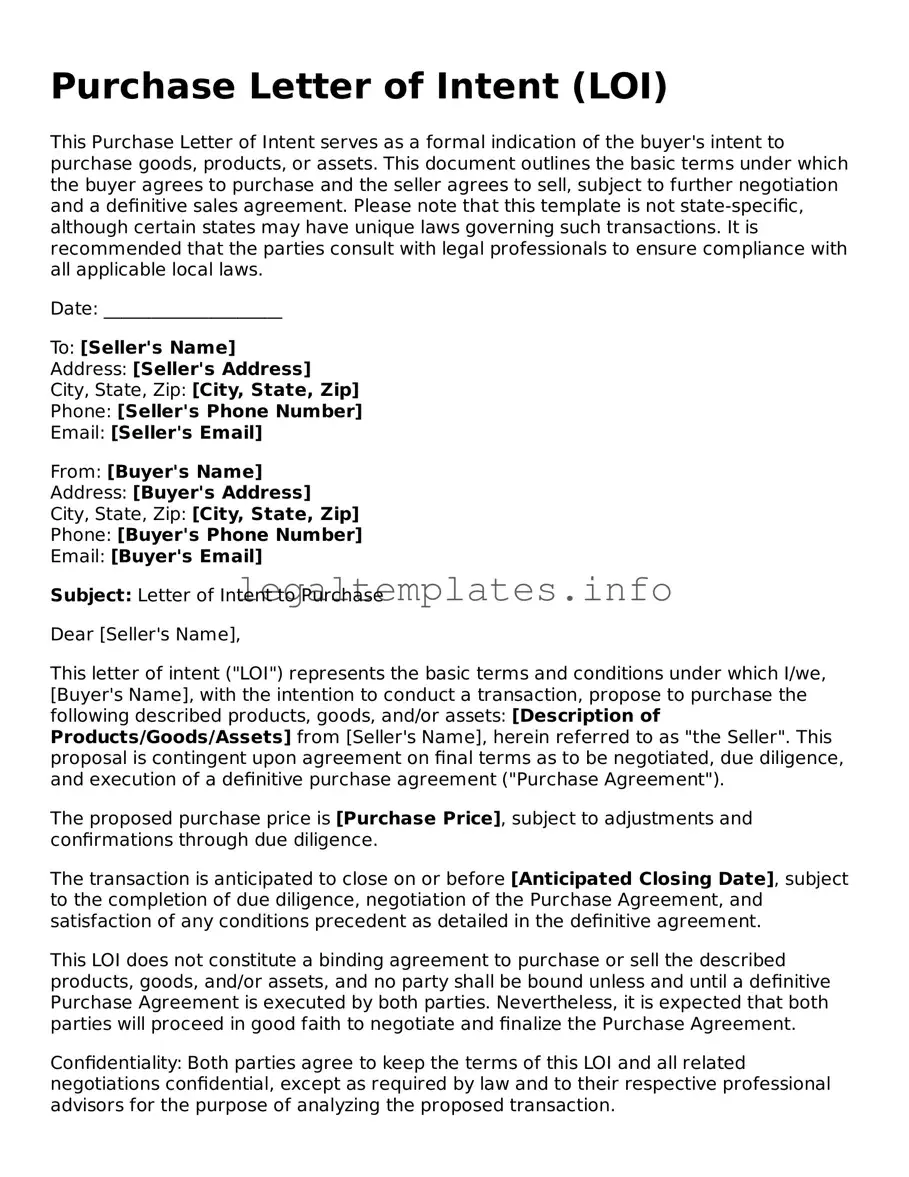Purchase Letter of Intent (LOI)
This Purchase Letter of Intent serves as a formal indication of the buyer's intent to purchase goods, products, or assets. This document outlines the basic terms under which the buyer agrees to purchase and the seller agrees to sell, subject to further negotiation and a definitive sales agreement. Please note that this template is not state-specific, although certain states may have unique laws governing such transactions. It is recommended that the parties consult with legal professionals to ensure compliance with all applicable local laws.
Date: ____________________
To: [Seller's Name]
Address: [Seller's Address]
City, State, Zip: [City, State, Zip]
Phone: [Seller's Phone Number]
Email: [Seller's Email]
From: [Buyer's Name]
Address: [Buyer's Address]
City, State, Zip: [City, State, Zip]
Phone: [Buyer's Phone Number]
Email: [Buyer's Email]
Subject: Letter of Intent to Purchase
Dear [Seller's Name],
This letter of intent ("LOI") represents the basic terms and conditions under which I/we, [Buyer's Name], with the intention to conduct a transaction, propose to purchase the following described products, goods, and/or assets: [Description of Products/Goods/Assets] from [Seller's Name], herein referred to as "the Seller". This proposal is contingent upon agreement on final terms as to be negotiated, due diligence, and execution of a definitive purchase agreement ("Purchase Agreement").
The proposed purchase price is [Purchase Price], subject to adjustments and confirmations through due diligence.
The transaction is anticipated to close on or before [Anticipated Closing Date], subject to the completion of due diligence, negotiation of the Purchase Agreement, and satisfaction of any conditions precedent as detailed in the definitive agreement.
This LOI does not constitute a binding agreement to purchase or sell the described products, goods, and/or assets, and no party shall be bound unless and until a definitive Purchase Agreement is executed by both parties. Nevertheless, it is expected that both parties will proceed in good faith to negotiate and finalize the Purchase Agreement.
Confidentiality: Both parties agree to keep the terms of this LOI and all related negotiations confidential, except as required by law and to their respective professional advisors for the purpose of analyzing the proposed transaction.
Governing Law: This Letter of Intent shall be governed by and construed in accordance with the laws of the state in which the transaction occurs, without regard to its conflict of law provisions.
We look forward to moving forward with this transaction and anticipate your prompt response.
Best regards,
[Buyer's Name]
Signature: ________________________ Date: ________________________
Acknowledgement by Seller
This is to acknowledge that I/we, [Seller's Name], have received this Letter of Intent from [Buyer's Name] on the date mentioned above and agree to proceed in good faith with the negotiation of the Purchase Agreement.
Best regards,
[Seller's Name]
Signature: ________________________ Date: ________________________
